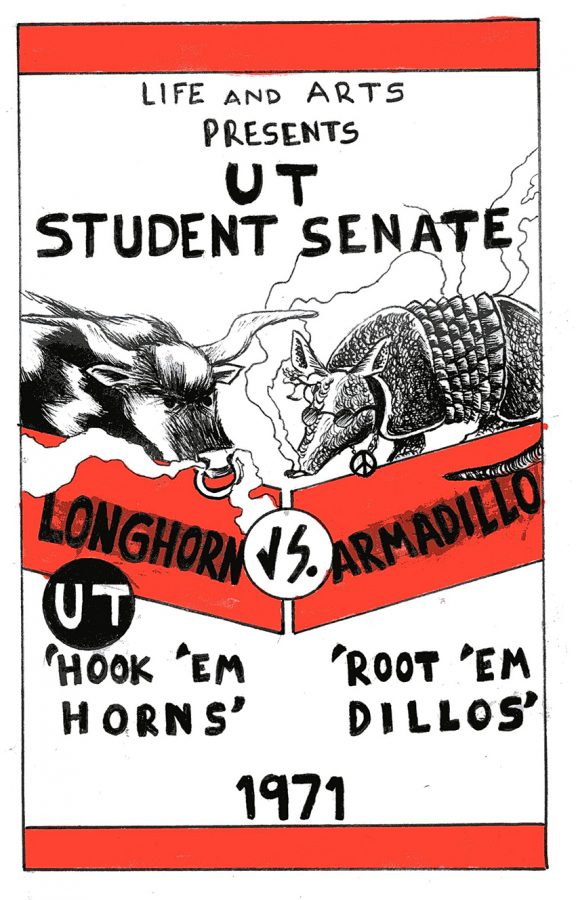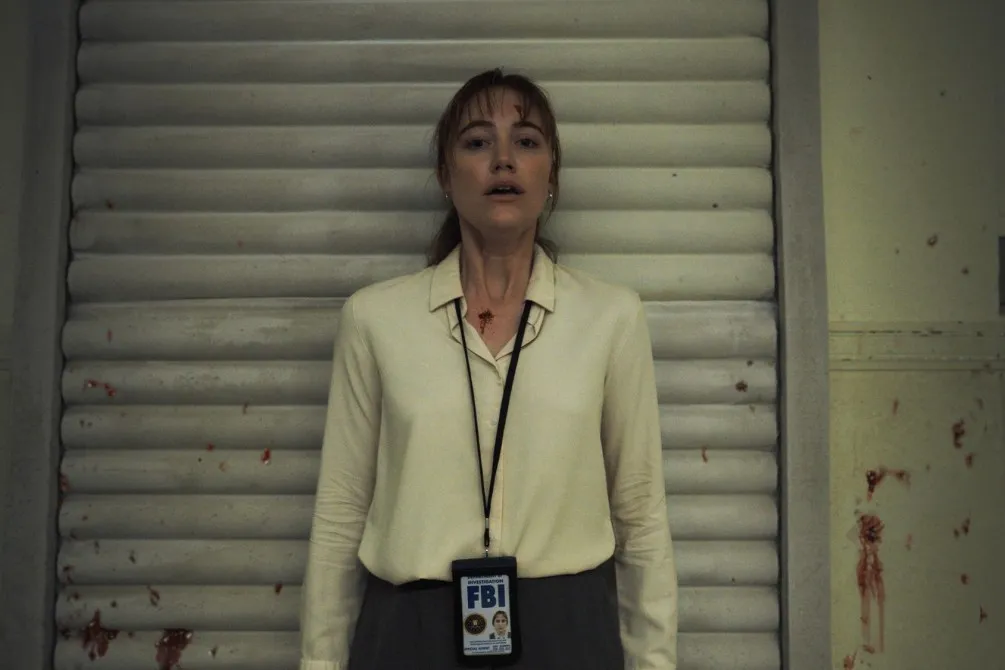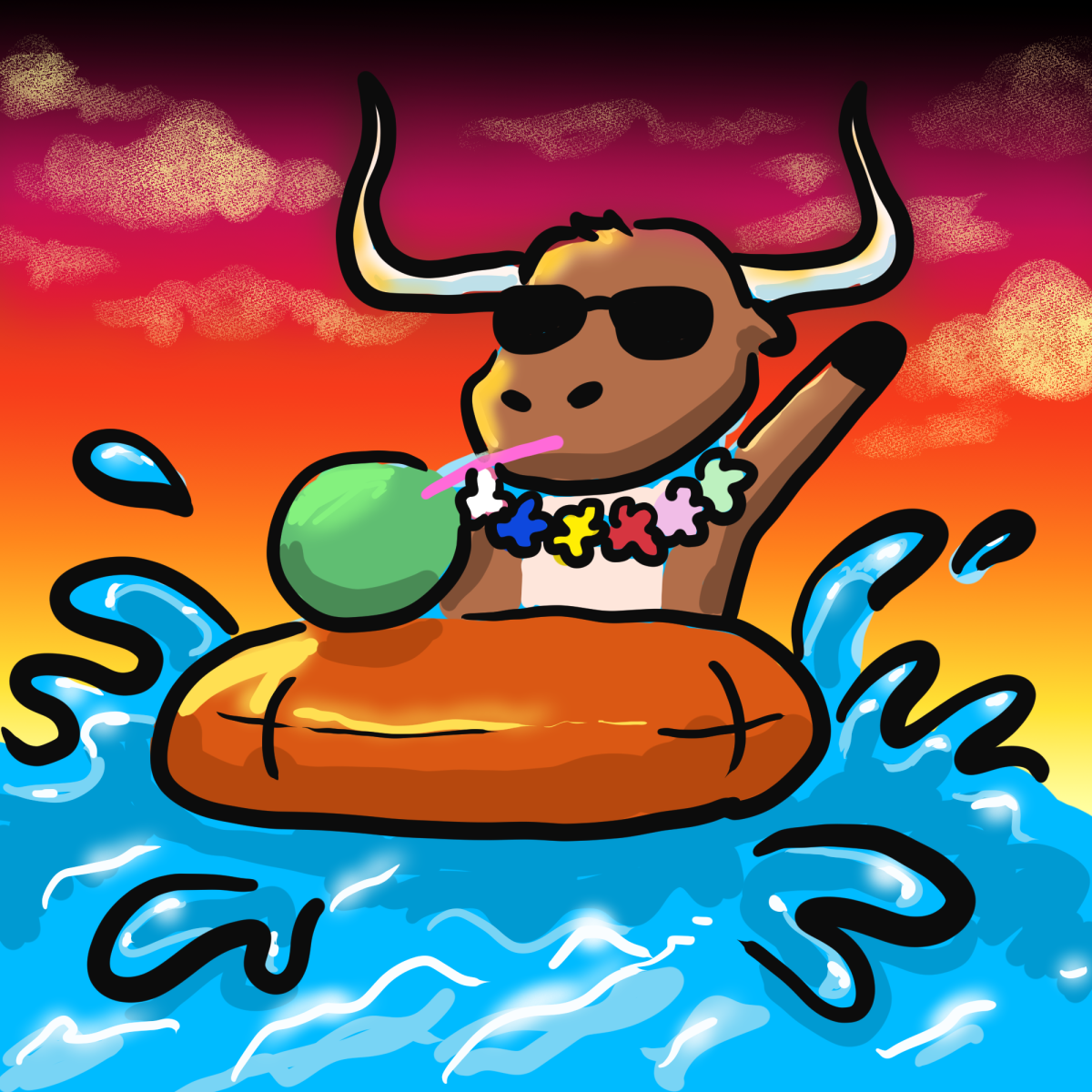In central Texas, we cherish horned cows as the patron gods of football games. Longhorns are everywhere in Austin, but the city seems to host more than its fair share of mascots: from the bats underneath our bridges to the salamanders in our springs. But above all these other beasts, the armadillo reigns supreme. Our love for the endemic nine-banded variety is so strong that we nearly abandoned our identity as ‘horns to call ourselves the ‘dillos…
…Or at least that’s the story that ran rampant through both local and national media outlets in the late fall of 1971. After The Daily Texan ran an article in its November 3, 1971 issue reporting that the Student Senate had unanimously passed a resolution “to determine grassroots support for the mascot change within the student body,” even The New Yorker paid attention.
According to Bob Binder, student body president at the time, UT students never actually voted on the issue. Nonetheless, Binder said the resolution was able to attract a lot of attention because of the audaciousness of the idea.
As one dissenter, James Cartwright, wrote in an op-ed published in The Daily Texan:
“I protest. The Student Senate stands condemned as murderous, blood-thirsty, rapacious direspectors of life. That they would have the audacity to suggest the armadillo as mascot of Texas under the guise of its being peaceable and ‘ecologically minded’ reveals its true colors … studies showed the armadillo to be rapacious in its actions.”
Despite backlash from students, alumni and legislators, Binder said the resolution made sense to students in the Senate.
“Well, armadillos, they’re survivors, they’re tough little fellows and they represented the spirit of the University more than a Longhorn that grazes in a field and later gets eaten,” Binder said.
Though Binder said the enthusiasm for armadillos hadn’t originated on the UT campus, he said some students happily adopted armadillos as a symbol of their generation.
The armadillo symbolism had in fact been previously popularized by Austin icon and artist Jim Franklin, who had already begun drawing his signature armadillos on posters and concert bills around town. Franklin said the universal appeal of the creature lie in its easygoing and gentle nature.
“I think the armadillo definitely became the animal metaphor that they could identify with, because it had all the characteristics of the various issues that were happening at the time — you know, conformity, being individual and being, you know, kind of abused just for being odd,” Franklin said.
Armadillos certainly caused a lot of buzz both within and beyond the student body, but Binder says the whole ordeal was also annoying — and not to mention unwarranted, since the resolution never even came to light — because it was far from the most important thing Student Government was involved in.
“We had a whole world to save, and that wasn’t gonna do it,” Binder said. “You know people wanted to stop the Vietnam war; they wanted to stop racism. There were a lot of much bigger things they were involved in, and abortion was a huge issue on campus at the time.”
The presence of a large orange and white horned beast on the field on game days is testament to the ultimate failure of the initiative, but Binder says the true legacy of the incident rests in the significance it had to the people who championed its cause.
“It was partially tongue in cheek but also just a little rebellious streak that was popular at the time,” Binder said. “A lot of people during the draft didn’t trust the older generation. This was just sort of a way of sort of saying, ‘Yes, your mascot was the Longhorn, but ours will be the armadillo.”
Or, as Jim Franklin put it, the whole ordeal was a kind of performance art in reaction.
“It was a satire of people who were building up their ego too much,” Franklin said, “kinda like Donald fucking Trump.”















